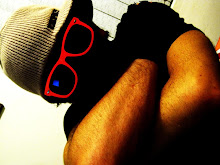
Common Names: African mono, African moony, African fingerfish, poor man's angelfish.
Scientific Name: Monodactylus sebae (Cuvier, 1829)
From Where? The most westerly part of west Africa, found along the coasts of countries such as Senegal, Nigeria and Angola.
They're found in freshwater, brackish and marine environments here, mostly depending on the size of the fish - the younger fish tend to be found in freshwater, while adults and sub-adults are more often in brackish or marine water. However, this species freely moves between the three, moving to wherever it may find food.
Size: 25cm (10 inches) for fully grown specimens, which can be as tall as 30cm (1 foot). However, few fish grow larger than 15cm (6 inches), with about 20cm (8 inches) height on them.

Foodstuffs: voraciously omnivorous, there's little that these fish won't eat. A good balance should be offered; dry foods can be used as a staple diet but be sure to use some live/frozen foods from time to time. Some say that adding some greenery to their diet (eg: peas) is beneficial.
Water: despite the Monos adaptability with regards to water conditions, overall it's best to stick to brackish water during their juvenile/sub-adult stages, moving them on to marine once they're adults.
You'll probably buy the fish from the shop in freshwater, so slowly increase the salinity at home by an SG of 0.002 per week until you're at about 1.006. This should be fine until the fish gets larger, where you can move it into water of anything between 1.010 and 1.018 before moving it into marine.
Keeping the pH above 7.5 and the temperature between 24° and 28°C (75° and 82°F) is good; otherwise water conditions aren't critical, but because they're such eager feeders you should probably keep an eye on water quality. A decent filter is recommended.
Aquarium Specifics: Monos are large, open-water schooling fish, using their ridiculous height to make the most of the space that they're given. As such, the tank's length, breadth and height are important to consider. For a group of 3 or 4 adults you'll want a tank of about 5x2x2 feet (150x60x60cm), but bigger is better, especially if you want a bigger school.
Keep the tank space relatively open to avoid you fish having their style cramped, keeping the decor to the back and the sides.
Compatibility: one of the more even mannered brackish fish available, they get on well with practically anything that they can't eat and whatever can't eat them. Stick to this rule, avoid bumblebee gobies (expensive breakfast for Monos) and brackish morays (expensive breakfast for morays), and choose the other brackish schoolers, such as other mono species, scats and silver shark catfish.
Oh, and it's important to note that bigger monos sometimes pick on smaller monos, and because of this you'll want to buy specimens of roughly the same size.
Specific Problems: needs plenty of space. Not a bad choice for a slightly larger brackish tank.
Rarity: kinda common. Most good stores should be able to get them for you.
Similar Species: besides the other monos, which are significantly more rounded than this fish with no bars on the body, the African mono is only ever confused with Pterophyllum scalare - the freshwater angelfish. The freshwater angelfish has much longer finnage, and its scales don't extend onto the dorsal and anal fins.



No comments:
Post a Comment